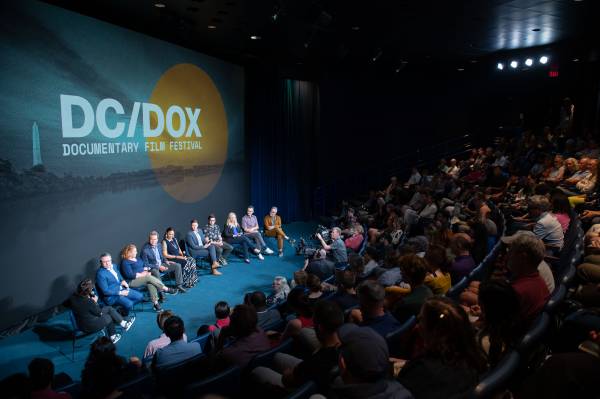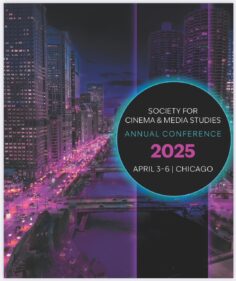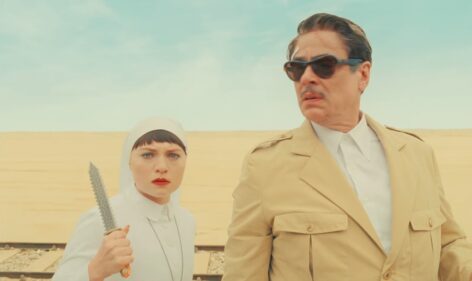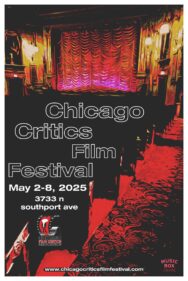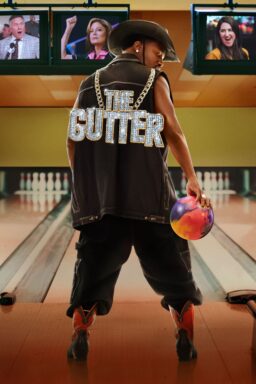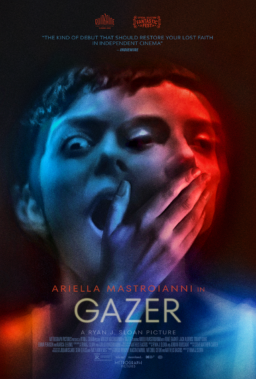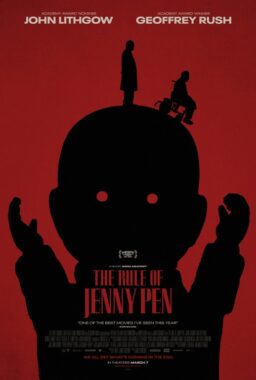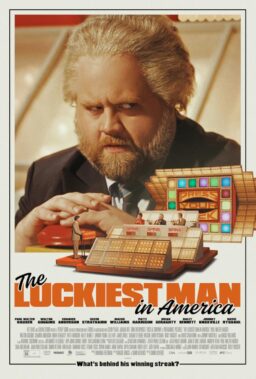When the American Film Institute moved its popular documentary film festival from Washington, D.C. to Los Angeles (combining it with its AFI Fest), its former festival director, Sky Sitney, and Jamie Shor (who had guided communications and public relations) took over. DC/Dox began in 2023 with an ambitious schedule featuring 31 features and 21 shorts. Sitney, the Festival Director, said, “We’re living in a time when we seldom come together to share a collective experience and engage in the respectful exchange of ideas. Film, particularly documentary film, demands our attention at a time when it is in high demand and low in supply. It opens up new perspectives and worldviews, and welcomes us to engage with the most pressing issues of our day with nuance.”
Co-founder Shor, added, “This festival matters because this market matters. Washington, DC offers the documentary community access to journalists, opinion leaders and stakeholders like no other city. DC/DOX moves the art forward in the march towards audiences….Through our programming, panels and conversations, we believe we are answering the call from our community.”

In its second year, the festival presented 51 features and 47 shorts from 17 countries, from both emerging and established filmmakers, with a wide range of themes, perspectives, and styles. Each film was followed by a Q&A with filmmakers. “Sabbath Queen” director Sandi DuBowski described the warm reception from the audience who saw the film at the United States Navy Memorial theater. “I was so moved by the emotion and intensity of our DC/DOX screening, full of tears and laughter, in such an exquisite cinema.”
“Shaking it Up: The Life and Times of Liz Carpenter”: Abby Ginzberg’s documentaries are usually about people who had a significant impact on history but are not well known. For this film, her co-director was Christy Carpenter, her friend of many years and the daughter of the movie’s subject. Liz Carpenter was a pioneering journalist in the era when most newspapers refused to hire women or limited them to gossip and fashion. She left her home in Texas and went to Washington, D.C., to write about politics. She founded a wire service with her husband. Her duties included covering then-Senator Lyndon Baines Johnson and his wife, Lady Bird. When he became Vice President, he asked her to work in the White House. When he was sworn in as President following the shocking assassination of John F. Kennedy, she wrote his 58-word statement, assuring America and the world that he shared their sense of loss but was able to shoulder the responsibilities of the office.

Carpenter became one of LBJ’s closest advisors and organized Lady Bird Johnson’s unprecedented whistle-stop train journey through the South during his campaign and her advocacy for the environment and education. Later, she worked for women’s rights, including the Equal Rights Amendment. Carpenter’s remarkable life is presented with the kind of unquenchable good humor she always brought to politics, disarming opponents with charm and wit. The archival footage–from home movies to her many public appearances, her reflections and memories on C-SPAN, and comments from those who knew and worked with her–is well chosen to show her energy, intelligence, and unwavering commitment to the public good. Much of it is also very funny. Near the end, someone comments that hers was the era “when politics was not a blood sport.” The film will remind viewers that there once were such times and perhaps inspire them to try to bring them back.
“Porcelain War”: Three Ukrainian artists film their experiences as they are drawn into the war following the Russian invasion. While Hollywood sent five of its top directors to film operations in WWII, here American producers just sent equipment, letting the artists tell their own stories. Slava Leontyev and Anya Stasenko are a couple who create delicately painted porcelain figures together. Their close friend Andrey Stefanov makes oil paintings. Before the invasion, they lived in an Edenic world of nature and art. Afterward, they alternate military operations with the foundational normality of continuing to make art, including using their skill as artists to show us what is going on around them.
We see the contrast between the beauty of their surroundings and the unimaginably terrible acts of war. They train their neighbors in weapons that are “noisy and stinky and have a horrible, disgusting purpose.” They care for the wounded and acknowledge the “horrific waste of life” resulting from choices made by people who are far from the guns and bombs. We see a father sending his wife and twin daughters across the border to safety. They show us rows of sunflowers abutting new graves and the once-safe field Slava and Anya used to walk through with their dog, Frodo, now explored more gingerly, to identify and mark Russian mines.
Co-director Brendan Bellomo, who never met his subjects until they arrived in the US, said, “I had never in my life seen such remarkable, everyday people, who, even in the darkest circumstance, were shining with humanity, resilience, and the unstoppable drive to put beauty into the world using their art.”

The artists see their activities less as contrast than as an organic whole, the filming of their lives one more way for artists to create and the one more reminder of the vital force that art brings to our understanding of the world. They film with an artist’s eye for composition, and the documentary is filled with striking images. They film with the heart of people amid the direst possible pressures. We meet the other soldiers, all stepping away from their usual lives to fight for freedom. They find a new level of commitment and connection. And conclude, “The enemy is not as creative at being bad as the good are at being good.”
Subject and co-director Leontyev talked about what the film means to him. “We are artists who didn’t have a choice but to take up arms to defend our homes. Our decision to focus on beauty, rather than destruction, is how we resist the evils of this invasion. As Russia attacks all aspects of our culture in Ukraine, it’s important for us to continue to make art that replaces what is being destroyed around us.”
“The Bitter Pill”: A lawyer from West Virginia named Paul Farrell, Jr. takes on the pharma and medical industries with a lawsuit that hits close to home. His community has been devasted by opioid addiction. In his county, 20 percent of the babies are born addicted to opioids, and West Virginia has the highest overdose rate per capita in America. The number of overdose deaths and suicides is shocking, even for those who have read the news stories.
This is not a David and Goliath battle; it is David against a thousand Goliaths. They have “all the money in the world,” and he is facing expenses, ultimately losing his home and law firm. Meanwhile, the state Attorneys General, having obtained a huge settlement from the tobacco companies, want to take over, promising to “act on everybody’s behalf.” Farrell has to make a lot of difficult strategic choices. A jury trial might mean more sympathy, but it would also mean a lot of delays. Should he join forces with the other cases? How can he manage the avalanche of documents from the defendants? What should he do as the case drags on and his family feels neglected?
The movie frustratingly stops before the story is over (we get the trial judge’s ruling, but the litigation continues), but Farrell makes a compelling central figure, and the film provides significant insights into the legal system, its strengths and weaknesses.

“Sabbath Queen”: Director Sandi DuBowski filmed Rabbi Amichai Lau-Lavie over 21 years, giving remarkable scope to the story of a young, gay Israeli man struggling with his identity as heir to the tradition of 38 generations of Orthodox rabbis, the son of a Holocaust survivor, the nephew of the Chief Rabbi of Israel, born on the day of Israeli independence with a name that means “My nation lives.”
He is outed without his consent by the Israeli press, so he moves to New York, where he finds a new life and a new persona: a drag queen named Hadassah Gross, a brash, outspoken widow with a wig and a triple string of pearls. Nested stories over six decades in three countries provide context and contrast. We see two sets of brothers, Amichai’s father and uncle, the only members of their family to survive the Buchenwald concentration camp, and Amichai and his brother, Orthodox rabbi Benny Lau, who has deep conflicts over his brother’s choices to depart from the traditions that are the foundation of the family’s beliefs.
Amichai and those he encounters ask how best to honor Jewish values and preserve the community despite the pressures of assimilation and personality. Amichai chooses inclusion. He says, “Not everything we’ve inherited is worthy of being passed on.” How do you add without diluting? Even he, feeling the weight of nine centuries of rabbinic ancestors, questions how that will be seen a century from now. The questions the film raises are particular to the individuals, but the issues of identity, family, and the challenges of modernity are universal.
“The Quilters”: A short film about maximum security prisoners in Mississippi who make quilts for foster children is as touching as it sounds. “I’m the big bad wolf down here,” one says. “But it’s a front. My emotions change when I walk through the door [to the quilting room].” We see men, some who have been in prison for decades and know they will die there, looking for just the right color, carefully drawing a grid to lay out the pattern, or ripping out an imperfect seam because a foster child deserves a blanket someone cared enough to make perfect. “Something like that I can’t pass,” he explains. “This is something somebody’s going to see for a long time.” They create something they wish someone had cared enough to make for them. They create something for children they feel they understand. When they get a note telling them how much a quilt meant to a child, tears well up in their eyes and probably in yours, too.
“Ain’t No Back to a Merry-Go-Round”: The title comes from a Langston Hughes poem, aptly applied to a story from the early days of the modern Civil Rights movement. We hear the cheery jingle for a Washington D.C. amusement park called Glen Echo, with archival images of people enjoying the roller-coaster. White people. The park was segregated. This all-but-forgotten story of the protests that took place long before the Civil Rights Act and in the same year as the famous North Carolina Woolworth’s lunch counter sit-in is vividly told with remarkable archival footage and contemporary recollections. The Black protesters mostly came from Howard University. The white allies were mostly from the Bannockburn neighborhood, a progressive group “founded on utopian principles,” described as “kibbutz-like” because they shared tool sheds and lawnmowers.

The movie is filled with fascinating characters and details. Since Washington is the nation’s capital, the strict segregationist policy at Glen Echo had to be amended to allow Black diplomats through the door following the visit by Pat Nixon, married to then-vice-president Richard Nixon, with Indonesian President Sukarno. One of the most important figures of the Civil Rights era, Stokely Carmichael, appeared in his first protest at Glen Echo, along with legends Roy Wilkins, J. Philip Randolph, and Adam Clayton Powell. A letter to the editor from a Black writer objected to the protests, saying that the primary objectives should be jobs, not entertainment. A white segregation supporter changed her mind after seeing “what kind of people” were protesting the integration efforts. A large number of the white allies were Jewish, but so were the brothers who owned the amusement park.
It is heart-breaking, infuriating, and inspiring. “Most of the people who make history are invisible,” we are told. Thankfully, documentaries like these make them not just visible but unforgettable.

